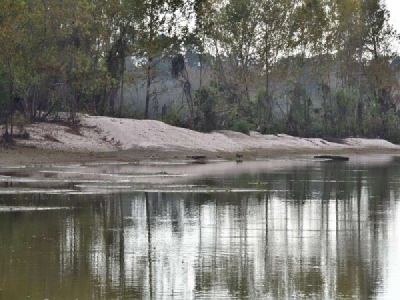
Posted on March 12, 2018
By Mike Snyder and Melanie Feuk, Houston Chronicle
Houston and Harris County officials are pursuing the removal of sediment from the San Jacinto River as a “top priority,” citing an urgent need to protect communities near Lake Houston from a repeat of the calamitous flooding they endured during Hurricane Harvey.
Harris County Judge Ed Emmett said he has spoken to state officials about potential funding of a dredging project that would increase the river’s capacity to hold floodwaters. A planned county flood control bond issue is another possible funding source, Emmett said.
“This needs to become a top priority project,” Emmett said in an interview this week.
Mayor Sylvester Turner offered similar assurances to several hundred residents at a community meeting in Kingwood Tuesday night. Turner said he had spoken to Gov. Greg Abbott earlier Tuesday about the pressing need to remove sediment from the river.
“We talked about the dredging issue and dealing with that in real time instead of putting it off for years and years and years,” Turner said. The mayor said he hopes dredging can commence within about a month.
The Houston Chronicle reported Sunday that many Lake Houston-area residents and community leaders were concerned that their needs had not been given enough priority in post-Harvey discussions about flood protection. The vulnerability of these communities was underscored last week, when the San Jacinto rose out of its banks in Kingwood after a storm that dropped less than a half-inch of rain.
“I can imagine the anxiety that created,” Turner said.
More than 16,000 homes and 3,300 businesses in Kingwood, Humble and other towns and developments near Lake Houston were damaged by flooding in the aftermath of Hurricane Harvey. The damage was worsened by sedimentation, some of it linked to nearby sand mines, that dramatically reduced the capacity of the river and lake to hold floodwaters.
The scope of the sand mining operations is enormous, and involves clearing vegetation from large areas of the riverbank and extracting sand from open pits. Many residents and elected officials say sand mining operations dump huge quantities of sand into the river when it rises, although an industry spokesman said this relationship has not been sufficiently studied.
State officials have identified 16 mining facilities on the east and west forks of the San Jacinto that were active around the time that Harvey made landfall on Aug. 25. Research by the nonprofit Bayou Land Conservancy found that about a quarter of the floodplain along the west fork had been excavated for sand mining.
Removing sand from the river, Turner and others said, would be pointless unless steps are taken to deal with the source of the sedimentation.
“We can dredge today, but if the sand mining continues, we’re just dredging today to dredge again,” Turner said.
In addition to dredging, Turner said the city is seeking funds to add 10 gates to facilitate the release of water from the Lake Houston dam. This could help to eliminate a bottleneck created when the Lake Conroe dam, which has more gates, releases water too quickly for the Lake Houston dam to keep up.
Bob Rehak, a longtime Kingwood resident who has been active in efforts to protect the community from flooding, said he was pleased at the statements by the mayor and the county judge.
“It’s definitely encouraging,” said Rehak, who attended the Tuesday night meeting. However, he said he was concerned that discussion of dredging seemed to focus solely on the river’s west fork.
“What about the east fork?” he asked. “They apparently weren’t aware that the sanding there was as bad if not worse as it is on the west fork.”
Any dredging should be done in a way that considers the potential environmental impacts, said Matthew Berg, a hydrologist with Simfero Consultants. Digging up sediment can re-suspend pollutants that may have drifted down from upstream, he said.
“The San Jacinto River doesn’t have a tremendous reputation for a legacy of purity,” said Berg, a board member of the nonprofit Bayou Land Conservancy. “Heavy stuff from manufacturing processes can sink to the bottom.”
Berg recommended core sampling and containment measures to ensure that any pollutants don’t flow downstream to Lake Houston, a major source of drinking water.
Source: Houston Chronicle





